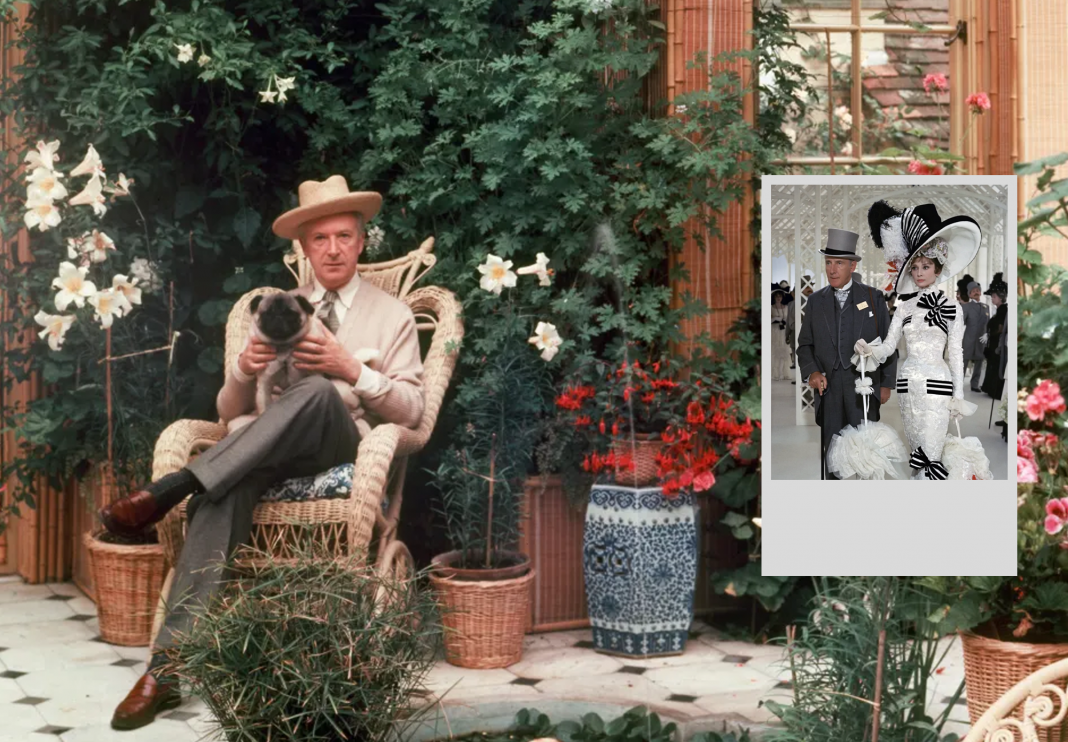As the Garden Museum in London unveils Cecil Beaton’s Garden Party, a new exhibition exploring the famed artist’s obsession with flowers, designer and curator Luke Edward Hall speaks to Louisa McKenzie about the enduring magic of Beaton’s floral vision — a life where art, fashion, and nature intertwine with theatrical flair.
A Visionary in Full Bloom
Sir Cecil Beaton was never just one thing. Photographer, diarist, set and costume designer, interior aesthete — his career spanned fashion shoots for Vogue, war photography, royal portraiture, and Oscar-winning cinematic fantasy. Perhaps most famously, he designed the iconic costumes for My Fair Lady — both its Broadway debut and the lavish 1964 film adaptation. Yet, beyond the glittering stage lights and black-and-white prints, Beaton harbored a quieter, more personal passion: the garden.

“My garden is the greatest joy of my life, after my friends. Both are worth living for,” he once confessed in 1979, a year before his death. Now, in Cecil Beaton’s Garden Party — on show at London’s Garden Museum from May 14 to September 21 — Beaton’s deep-rooted love for horticulture finally takes center stage. Curated and designed by artist and creative polymath Luke Edward Hall, the exhibition examines not just Beaton’s two remarkable Wiltshire gardens at Ashcombe House and Reddish House, but also how floral motifs bloomed across every facet of his multidisciplinary work.
Floral Obsession: From Studio to Stage
Beaton’s affair with flowers began early — from arranging blooms in his rooms at Cambridge to decorating his sister’s high-society wedding. At Ashcombe, his first country house, he developed ethereal floral arrangements inspired by Syrie Maugham’s all-white interiors, creating dreamscapes that would later influence his portrait photography. At Reddish House, his final sanctuary, he designed a cutting garden to provide material for endless bouquets — a daily ritual of cultivating beauty.

His floral sensibility spilled over into costume and set design, notably in productions such as the ballet Apparitions, where ballerina Margot Fonteyn wore a headdress adorned with fantastical petals. In My Fair Lady, the famous Ascot scene’s monochrome spectacle was also an ode to nature’s rigid elegance, subtly referencing Eliza Doolittle’s humble origins as a flower seller. The exhibition features original costume illustrations from ballets like Les Sirènes and Apparitions, alongside rarely seen oil paintings like The Cutting Garden — a quiet, tender tribute to the spaces that nurtured him.

Luke Edward Hall: Curating a Garden Dream
Bringing Beaton’s world to life is Luke Edward Hall, a designer known for his romantic, eclectic aesthetic that spans fashion, interiors, and illustration. For Hall, the project is both homage and kindred expression. “I’m an enormous fan of so much of Beaton’s output,” he says. “Yet ultimately it’s so much more than just Beaton’s work — what inspires me is his approach to life, his endless documentation and cultivation of beauty.”
Hall’s design for the exhibition blends reverence with whimsy, mimicking Beaton’s own theatricality. Just as Beaton’s gardens served as backdrops for fêtes champêtres and impromptu photo shoots, Hall creates immersive spaces that invite viewers to wander through floral fantasy. For Hall, it’s about honoring a way of living — one where the boundaries between art, domesticity, and performance are joyfully blurred.

“In a strange way,” Hall reflects, “I wonder if 20 or 30 years ago people may have sniffed at the idea of an artist working across so many disciplines, whereas today it feels almost de rigueur.” Indeed, Beaton’s unapologetic eclecticism feels more relevant than ever in a cultural landscape that values the multi-hyphenate. Like Hall himself, Beaton embraced maximalism not just in style, but in life philosophy — believing that beauty, in all its forms, was worth pursuing with conviction.
A Floral Legacy Reimagined
What makes Cecil Beaton’s Garden Party so powerful is its refusal to separate the man from his myth. The exhibition is less a retrospective than a portrait — not of Beaton’s most famous works, but of the threads of inspiration that quietly defined him. Whether through embroidered roses on a surrealist jacket or a photograph of the young Queen Elizabeth II framed by fresh blooms, the floral motif is not mere decoration but a language — one that speaks to joy, fragility, and the theatricality of everyday life.

At a time when nature is increasingly politicized and luxury is redefined by sustainability and mindfulness, Beaton’s garden-centric world feels freshly poignant. His gardens were not just places of escape, but of creative regeneration — spaces where he could edit reality and plant something entirely his own. That he did so with such finesse is a testament to his singular vision.
A Celebration in Full Color
In the end, Cecil Beaton’s Garden Party is more than a tribute to a great artist. It is an invitation to inhabit beauty — to see the world not just as it is, but as it could be, filtered through blossoms, brushstrokes, and silk. “Beaton was determined to lead his life in a cloud of extraordinary vividness, of absolute wonder,” Hall concludes. “And I find this rather wonderful.”

Indeed, it’s difficult not to. In the age of image overload, Beaton’s universe reminds us that the most lasting art comes not from spectacle alone, but from cultivating a sense of awe — one bloom at a time.






